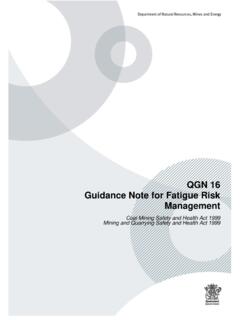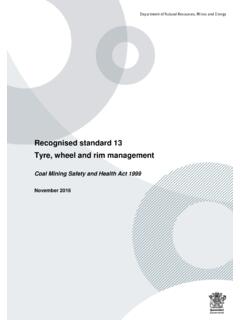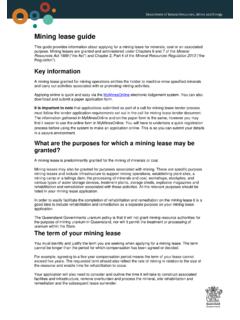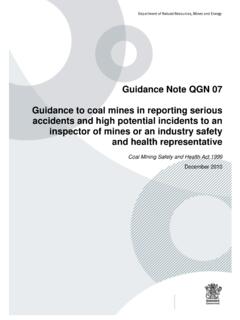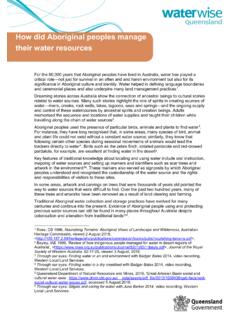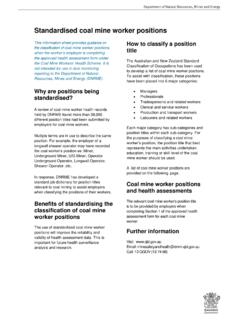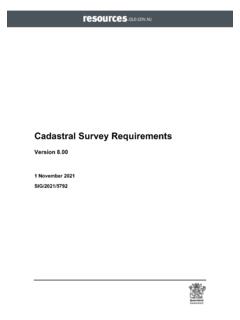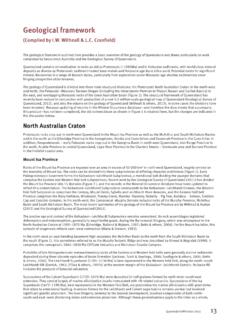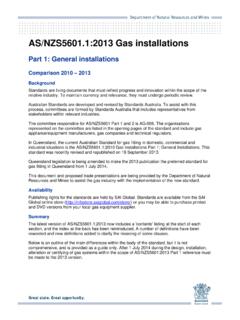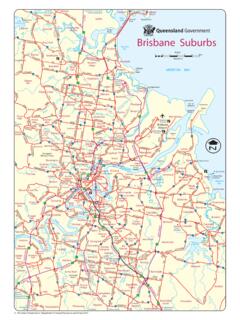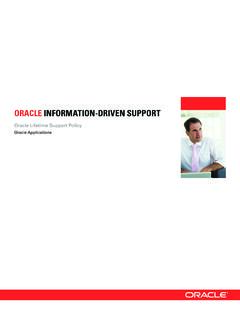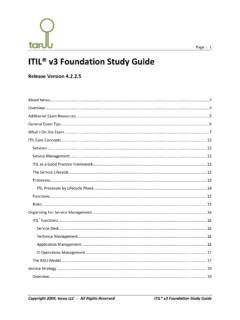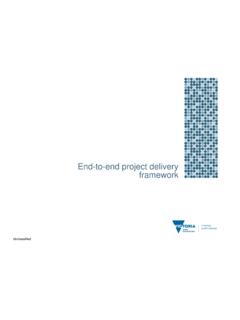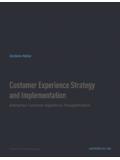Transcription of Planning guidelines for water supply and sewerage
1 Planning guidelines for water supply and sewerage April 2010 Chapter 6 amended March 2014 This publication has been compiled by Queensland water supply Regulator, water supply and sewerage services , Department of Energy and water supply . State of Queensland, 2014. The Queensland Government supports and encourages the dissemination and exchange of its information. The copyright in this publication is licensed under a Creative Commons Attribution Australia (CC BY) licence. Under this licence you are free, without having to seek our permission, to use this publication in accordance with the licence terms. You must keep intact the copyright notice and attribute the State of Queensland as the source of the publication.
2 For more information on this licence, visit The information contained herein is subject to change without notice. The Queensland Government shall not be liable for technical or other errors or omissions contained herein. The reader/user accepts all risks and responsibility for losses, damages, costs and other consequences resulting directly or indirectly from using this information. Contents 1 Purpose of the guidelines 1 2 Key Planning principles 3 The regulatory framework 3 Knowledge management 3 The Planning process 3 Stakeholders 4 Demand/flow and projections 4 Network modelling 4 Options for service provision 5 Remote or small community issues 5 Analysis of options 5 Implementation 5 Planning outputs 6 3 Glossary of terms 6 4 Abbreviations 15 Chapter 1 The regulatory framework 18 1 Purpose 18 2 Key principles 18 3 Why is this important?
3 18 4 When is knowledge of the regulatory framework required? 18 5 Key elements 18 6 Checklist 22 Chapter 2 Knowledge management 24 1 Purpose 24 2 Key principles 25 3 Why is knowledge management important? 25 4 When should knowledge management be undertaken? 25 5 Key elements 26 Identification of the knowledge required 26 Determine the current situation 27 Identification of knowledge management tools available 27 Develop and implement knowledge management strategy 31 6 Checklist 31 Chapter 3 The Planning process 32 1 Purpose 32 2 Key principles 32 3 Why is Planning important? 32 i 4 When should Planning be undertaken? 33 5 Key elements 33 Identify service need 35 Determine Service Objectives 36 Determine Scope of Planning 36 Identify stakeholder requirements 37 Evaluate current and future demands 38 Identify options for service provision 38 Undertake options analysis 38 Develop implementation strategy 39 Outputs from the Planning process 39 Key support processes 40 6 Checklist 41 Chapter 4 Stakeholders 42 1 Purpose 42 2 Key principles 42 3 Defining stakeholder involvement 42 Who or what are stakeholders?
4 42 Why involve stakeholders? 43 When should stakeholders be involved? 43 How to involve stakeholders? 44 4 Key elements 45 Identify stakeholders 45 Quantify and analyse stakeholder importance/involvement and requirements 46 Develop and implement stakeholder management strategy 49 Document stakeholder requirements 49 5 Checklist 50 Chapter 5 Demand/flow and projections 51 1 Purpose 51 2 Key principles 51 3 Why is the knowledge of demands and projections important? 51 4 When should demand and projections be determined? 52 5 Key elements 52 Collect and evaluate raw data 52 Determine key Planning parameters 54 Determine future demand or flow projections 58 6 Checklist 60 Chapter 6 Network modelling and applications 62 1 Purpose 62 2 Key principles 62 3 Why is network modelling important?
5 62 4 When should network modelling be undertaken? 62 5 Key elements 63 Model management 63 Determine model scope 64 Determine model demand/flow and patterns 64 - ii - Import data to analysis package 65 Model verification and calibration 68 Run model for various scenarios 71 Model outputs 73 6 Fire flow policy and minimum provisions 73 Overview 73 Purpose 73 Regulatory requirements 74 Roles and responsibilities 75 Fire flow policy 75 Minimum fire flow for water service provider networks 79 7 Demand and pressure management areas 83 Planning and design 84 Consultation with building owners/occupiers 85 Commissioning 87 Compliance testing by building owners 87
6 8 Provision of flow and pressure advice 87 Overview 87 Development/building applications 88 Certification and compliance testing 90 Changes to network conditions 90 water supply schemes without network models 91 9 Checklist 91 10 Bibliography 92 Appendix 1 Example pro-forma 93 Chapter 7 Options for service provision 95 1 Purpose 95 2 Key principles 95 3 Why is this important? 95 4 When should options for service provision be considered? 95 5 Key elements 96 Determine current performance 96 Shortlist potential options 96 Detailed evaluation of potential options 97 water supply options 99 sewerage options 113 Other Issues to be considered in Infrastructure Planning 132 6 Checklist 132 Chapter 8 Remote or small community issues 133 1 Purpose 133 2 Key principles 133 3 Background 133 4 Why is this important?
7 133 5 When should these issues be addressed? 134 6 Key elements 134 7 Checklist 137 - iii - Chapter 9 Analysis of options 138 1 Purpose 138 2 Key principles 138 3 Why is the analysis of options important? 138 4 When should the analysis be undertaken? 138 5 Key elements 139 Determine the evaluation criteria 139 Determine options 139 Develop inputs 140 Undertake the options analysis 141 Sensitivity analysis 143 6 Checklist 144 Chapter 10 Implementation 145 1 Purpose 145 2 Key principles 145 3 Why is an implementation strategy important? 145 4 When should an implementation strategy be developed? 146 5 Key elements 146 Determine project criticality 146 Determine the preferred project delivery option 147 Develop implementation program 149 6 Checklist 150 Chapter 11 Planning outputs 151 1 Purpose 151 2 Principles 151 3 Why is this important?
8 151 4 When should Planning reports be developed? 151 5 Key elements 152 Prepare Planning report 152 Incorporate outputs into other documentation 152 6 Checklist 152 - iv - 1 Purpose of the guidelines The primary purpose of these guidelines is to facilitate strategic thinking in the Planning process. These guidelines are the first major revision of Queensland State Government Planning guidelines on urban water supply and sewerage for over 10 years. Since then there have been substantial changes in the administration of, and regulatory framework for, the urban water industry as well as changes in the approach to water and sewerage Planning .
9 For instance the water services Association of Australia (WSAA) codes are adopted as suitable standards for the Planning and design aspects of water and sewerage reticulation/collection systems previously covered in the State Government Planning and design guidelines . The revised Planning guideline has an emphasis on integrated system Planning incorporating water , sewerage and stormwater. The Planning phase of the asset lifecycle provides the greatest opportunity for delivering water and sewerage services at the lowest lifecycle cost while also meeting social and environmental requirements. The document focuses on the Planning process and attempts to promote consideration of a wide range of infrastructure, source substitution and non-asset solutions to meet community needs.
10 The Planning principles/processes outlined in this document are applicable to Planning for other municipal services . This guideline encourages service providers to base their Planning on real data. It includes guidance on sizing of components and, as far as possible, attempts to continue the design philosophy in previous guidelines while achieving consistency with the WSAA Codes. Service providers can develop their own design parameters and sizing criteria based on the performance characteristics of their existing systems. Each chapter includes a bibliography that provides a ready reference to more detailed information, much of which is accessible by direct linkage to specific Internet sites.
